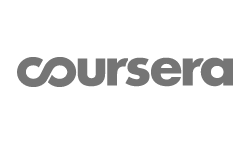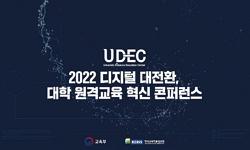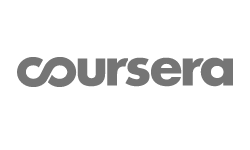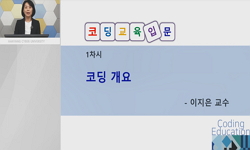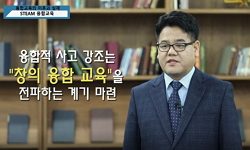This paper will discuss the usefulness of the literary and geographical approach for the education of Yeolha Ilgi, which is widely used as a material in textbooks, and discuss its educational significance. As an educational tool, we are going to use G...
http://chineseinput.net/에서 pinyin(병음)방식으로 중국어를 변환할 수 있습니다.
변환된 중국어를 복사하여 사용하시면 됩니다.
- 中文 을 입력하시려면 zhongwen을 입력하시고 space를누르시면됩니다.
- 北京 을 입력하시려면 beijing을 입력하시고 space를 누르시면 됩니다.

구글어스를 활용한 문학지리 교육 - 학습자의 『열하일기』 장소체험을 중심으로 - = Experience of Places in Yeolha Ilgi and Literary Geography Education through Google Earth
한글로보기https://www.riss.kr/link?id=A108309715
- 저자
- 발행기관
- 학술지명
- 권호사항
-
발행연도
2022
-
작성언어
Korean
- 주제어
-
등재정보
KCI등재
-
자료형태
학술저널
- 발행기관 URL
-
수록면
503-545(43쪽)
- 제공처
-
0
상세조회 -
0
다운로드
부가정보
다국어 초록 (Multilingual Abstract)
This paper will discuss the usefulness of the literary and geographical approach for the education of Yeolha Ilgi, which is widely used as a material in textbooks, and discuss its educational significance. As an educational tool, we are going to use Google Earth, which is composed of an intuitive interface, so that anyone can easily create a digital map. Among the works of Yeolha Ilgi, while realizing that Yeonam wrote while traveling in the Qing dynasty, the works that make us curious about where he wrote them are “Hogokjangron”, “Ilyagudohagi”, and “Sanggi”. In these works, the sense of place is important.
The learner draws the path of the entire journey of Yeonam from the viewpoint of the map of Google Earth. Although it is abstract through distance mapping, it is possible to reproduce the geographical distribution and the interrelationship between places in the journey of Yeolha Ilgi, like a kind of graphic essay. Therefore, the spatial context of Yeolha Ilgi is learned by the pattern formed with the correlation of places. Through the graph of this distance mapping, the learner can confirm how the materiality of the places Yeonam passed and its resultant symbolism formed liminality of the spatiality, and how Yeonam shaped it through writing.
In the process of visualizing Yeonam’s journey with Google Earth, the learner does not necessarily have to make it into a standardized and normalized map, just like making an existing map. Deep mapping is also possible. Deep mapping is the process of creating a user’s own map by mixing various media such as photos, sketch maps, text, and audio into the map according to the user’s intention. It is possible to create a map of Yeolha Ilgi that reflects the subjectivity and psychology of the learner by using virtual reality from the viewpoint of Google Earth, 360-degree panorama, and image overlay or polygon function. Such a deep mapping provides learners with the opportunity to not only read but also rewrite the map leading to Yeolha while living phenomenologically in the places of Yeolha Ilgi.
Through distance mapping, learners can transcendentally reflect on the patterns of the places Yeonam traveled and grasp the context of the journey, more holistically, the envoys of the Joseon Dynasty walked. On the other hand, through deep mapping, learners can experience more vividly the places where Yeonam has traveled, and also reflect on and redefine the places using various media and media devices.
Such distance mapping and deep mapping processes can promote the performative effect of learners’ ‘becoming Jiwon Park’. The educational effect can be presented in two ways. First, if the learner’s ‘Becoming Jiwon Park’ is achieved, interesting classes can be conducted by narrowing the distance between modern readers to classic literary works such as Yeolha Ilgi. Second, when accepting cartography as a procedural process rather than a complete one, the learner can become a traveler, the protagonist of another journey, while practicing ‘becoming Ji-won Park,’ the author of Yeolha Ilgi. Becoming a new traveler will cyclically trigger new cartography and writing about a new journey that is different from Yeolha Ilgi.
국문 초록 (Abstract)
본 논문에서는 교과서에서 제재로 많이 활용되는 『열하일기』교육을 위해 문학 지리학적 접근이 유용함을 논의하고, 그 교육적 의의에 대해 이야기하고자한다. 교육도구로는 직관적인 인...
본 논문에서는 교과서에서 제재로 많이 활용되는 『열하일기』교육을 위해 문학 지리학적 접근이 유용함을 논의하고, 그 교육적 의의에 대해 이야기하고자한다. 교육도구로는 직관적인 인터페이스로 구성되어 있어 누구나 쉽게 디지털지도 제작이 가능한 구글어스(Google Earth)를 활용하려 한다. 『열하일기』는 연암이 청나라를 여행하며 쓴 글이라는 점을 실감하면서, 특히 2015 개정교육과정에 따른 국어ㆍ문학교과서에 실린 작품들 중 <호곡장론>, <일야구도하기>, <상기>를 중심으로 그 여정을 따라가 보고자 한다.
학습자는 구글어스의 맵 시점으로 연암의 전체 여정의 경로를 그려보게 된다.원거리 지도 제작을 통해 추상적이지만 열하일기의 여정 속 지리적 분포와 장소 간의 상호 관계를 일종의 그래픽 에세이처럼 재현할 수 있다. 그래서 장소들의 상관관계가 형성하는 패턴에 의해 『열하일기』의 공간적 맥락을 학습하게 된다. 원거리 지도의 그래프를 통해 연암이 거쳐 갔던 장소들의 물질성과 그로 말미암은 상징성이 어떻게 해서 경계론적 장소성을 형성했으며, 그것을 연암이 글쓰기를 통해 어떠한 방식으로 형상화했는지를 학습자는 확인할 수 있다.
연암이 열하에 도달하기까지의 여정을 구글어스로 시각화하는 과정에서 학습자가 반드시 이를 기존 지도 만들듯이 규격화되고 표준화된 지도로 만들 필요는없다. 심층적 지도 그리기 또한 가능하다. 심층적 지도 그리기란 사용자의 의도대로 사진, 스케치 맵, 텍스트, 오디오 등 다양한 미디어들을 지도에 혼합하여사용자 자신만의 지도를 만드는 과정이다. 구글어스의 뷰 시점의 가상현실, 360 도 파노라마, 그리고 이미지 오버레이나 다각형 기능을 활용해 학습자의 주관과심리가 반영된 『열하일기』의 지도 제작이 가능하다. 그러한 심층적 지도는 열하일기의 장소에 현상학적으로 거주하면서 열하에 이르는 지도를 읽을 뿐만아니라 다시 쓸 수 있는 기회를 학습자에게 제공한다.
원거리 지도 제작을 통해 학습자는 연암이 여행했던 장소들의 패턴에 대해초월적으로 사색하고 사행단이 걸어갔던 여정의 맥락을 보다 전체적으로 파악할 수 있다. 반면 심층적 지도 제작을 통해 학습자는 연암이 여행했던 장소들을좀 더 생동감 있게 경험할 수 있고, 더불어 다양한 미디어와 미디어적 장치들을활용해 그 장소들을 성찰하고 재정의할 수 있다.
이러한 원거리 지도 제작과 심층적 지도 제작 과정은 학습자의 ‘박지원 되기’ 라는 연행적(performative) 효과를 촉진할 수 있다. 교육적 효과는 두 가지로 제시될 수 있다. 첫째, 학습자의 ‘박지원 되기’가 성취된다면, 『열하일기』 같은 고전문학 작품에 대한 현대 독자의 거리감이 좁혀져 흥미로운 수업이 진행될 수있을 것이다. 둘째, 완성된 것이 아닌 절차적 과정으로서 지도 제작을 받아들일때 학습자는 『열하일기』의 저자 ‘박지원 되기’를 실천하면서도 박지원과는 또 다른 여정의 주인공, 여행자가 될 수 있다. 이 새로운 여행자 되기는 순환적으로새로운 지도 제작과 아울러 『열하일기』와는 또 다른 새로운 여행에 대한 글쓰기를 학습자에게 촉발할 것이다.
1 안운호, "한국사 교과서 속의 고전 반영 추이와 활용 방안 연구" 한국사회과교육연구학회 60 (60): 105-120, 2021
2 오윤선, "청람교육의 이해" 한국교원대학교 출판부 197-214, 2011
3 "조백하"
4 박형준, "장소성의 재개념화와 문학 교육" 국어교과교육학회 20 : 179-196, 2012
5 이근영, "옛이야기 감상에서 장소감의 활용과 교육 방법" 초등교육연구원 32 (32): 357-369, 2021
6 박수밀, "열하일기 첫걸음" 돌베개 2021
7 박지원, "열하일기 Ⅰ~Ⅱ" 올재 2016
8 이효정, "여행 체험 중심의 《열하일기》 교육 내용 연구-<渡江錄>을 중심으로-" 반교어문학회 (49) : 347-380, 2018
9 황혜진, "문학을 통한 인문지리적 사고력 교육의 가능성 탐색" 한국고전문학교육학회 (13) : 67-100, 2007
10 박준형, "문학공간의 교육적 활용 방안 연구" 한국문화융합학회 42 (42): 459-481, 2020
1 안운호, "한국사 교과서 속의 고전 반영 추이와 활용 방안 연구" 한국사회과교육연구학회 60 (60): 105-120, 2021
2 오윤선, "청람교육의 이해" 한국교원대학교 출판부 197-214, 2011
3 "조백하"
4 박형준, "장소성의 재개념화와 문학 교육" 국어교과교육학회 20 : 179-196, 2012
5 이근영, "옛이야기 감상에서 장소감의 활용과 교육 방법" 초등교육연구원 32 (32): 357-369, 2021
6 박수밀, "열하일기 첫걸음" 돌베개 2021
7 박지원, "열하일기 Ⅰ~Ⅱ" 올재 2016
8 이효정, "여행 체험 중심의 《열하일기》 교육 내용 연구-<渡江錄>을 중심으로-" 반교어문학회 (49) : 347-380, 2018
9 황혜진, "문학을 통한 인문지리적 사고력 교육의 가능성 탐색" 한국고전문학교육학회 (13) : 67-100, 2007
10 박준형, "문학공간의 교육적 활용 방안 연구" 한국문화융합학회 42 (42): 459-481, 2020
11 남궁정 ; 김경훤, "문학공간 답사를 통한 한국어 학습자의 문화교육 방안 연구" 한국문화융합학회 41 (41): 581-614, 2019
12 안희준, "다큐멘터리 「김연수의 열하일기」 연구" 국제어문학회 (76) : 369-401, 2018
13 "난하"
14 문향기 ; 김익한, "기록과 기억의 재현 : 삼중의 미메시스로 실재읽기" 한국기록학회 (69) : 153-187, 2021
15 이근영, "공간생산론을 활용한 문학교육 방법 연구" 한국국어교육학회 (126) : 215-240, 2021
16 Tuan, Y. F., "공간과 장소" 대윤 1999
17 서명희, "고전시가를 제재로 한 교과 융합적 경험교육 -<덴동어미화전가>를 중심으로" 국어교육학회 52 (52): 285-313, 2017
18 주재우, "고전기행문학과 경험 교육-<열하일기>를 중심으로-" 한국고전문학교육학회 (15) : 89-112, 2008
19 "고등학교 『국어』, 『문학』 교과서"
20 정희진, "[정희진의 융합] 융합은 지향이 아니라 방식이다"
21 Ljungberg, C., "The Routledge Handbook of Literature and Space" Routledge 95-105, 2017
22 Bodenhamer, D. J., "Literary Mapping in the Digital Age" Routledge 207-220, 2016
23 Harris, T. M., "Literary Mapping in the Digital Age" Routledge 221-239, 2016
24 Rossetto, T., "Literary Mapping in the Digital Age" Routledge 258-275, 2016
25 Buckton-Tucker, R., "Language and Literature in a Glocal World" Springer 225-238, 2018
26 Moretti, F, "Graphs, Maps, Trees: Abstract Models for a Literary History" Verso 2005
27 김종철, "<춘향전>과 지리(地理) -문학교육과 지리교육의 공동 영역의 탐색" 한국고전문학교육학회 (35) : 47-85, 2017
28 권혁래, "<최척전>의 문학지리학적 해석과 소설교육" 한국국어교육학회 (81) : 23-44, 2009
29 교육부, "2022 개정 교육과정 총론 주요사항(시안)"
30 교육부, "2015 개정 초ㆍ중등 교육과정 총론"
31 황윤정, "2015 개정 교육과정에 따른 고등학교 국어⋅문학 교과서의 고전문학 제재 수록 양상 연구" 한국문학교육학회 (66) : 171-221, 2020
동일학술지(권/호) 다른 논문
-
- 한국문학교육학회
- 임인화
- 2022
- KCI등재
-
문학교육에서 심미성 개념의 재맥락화 고찰 - ‘가상성’을 중심으로 -
- 한국문학교육학회
- 김민재
- 2022
- KCI등재
-
- 한국문학교육학회
- 박권주
- 2022
- KCI등재
-
<아홉 켤레의 구두로 남은 사내>의 교과서 발췌 수록 양상 연구
- 한국문학교육학회
- 주영하
- 2022
- KCI등재





 KCI
KCI KISS
KISS
